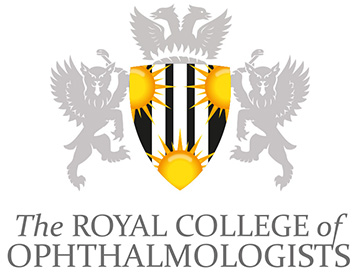RCOphth calls for action on workforce to reduce strain on ophthalmology services
7 September 2021
The Royal College of Ophthalmologists (RCOphth) has responded to a Health Education England (HEE) call for evidence to make the case for investment in the ophthalmology workforce to meet rapidly rising patient demand.
Read our response in full here!
Key points from our response
The key points from our response are summarised below:
- Patient demand for ophthalmology services will increase significantly in the coming years, due primarily to an ageing population, the rising prevalence of diabetes, and innovative treatments that require ongoing care.
- Workforce numbers are insufficient to meet patient demand now, and this problem will only worsen as patient demand rises. As well as efforts to improve retention; we need to increase the number of training places available as soon as possible. RCOphth estimates there is capacity to train at least 20 more trainees nationwide annually for the next three years.
- To help deliver eye care services, we must also focus on training more non-ophthalmologists as part of multidisciplinary team working. Greater attention needs to be paid to creating routes for roles such as imaging specialists and technicians.
- To support the development of the next generation of ophthalmologists, HEE and other stakeholders need to work together to increase the training opportunities available in the independent sector.
Increasing risk of harm and adverse outcomes for patients
The Royal College of Ophthalmologists (RCOphth) is calling for urgent action as the steep rise in numbers of patients needing ophthalmology to prevent sight loss is increasing the strain on already overstretched eye care services.
The RCOphth has responded this week to Health Education England’s call for evidence to support the development of a long-term strategic framework for health and social care workforce planning.
The RCOphth evidence paints a stark picture of the gap between rapidly increasing numbers of patients in need of eye care services to prevent or treat serious sight problems, and the shortage of ophthalmology consultants and other eye care staff.
Steep rise in numbers of patients needing ophthalmology services
As the UK population ages, the number of people living with sight loss is expected to increase by over a third in the next decade, reaching 2.7 million by 2030. The strain on ophthalmology services is more pronounced than for many other specialties for two key reasons:
- Ophthalmology services are concentrated on those aged 75+
- New treatments have emerged in recent years that have placed greater demand on the ophthalmology workforce.
In 2019/20, there were 9 million outpatient attendances for the five vision specialties, 9.4% of all outpatient attendances. NHS Digital data from 2019/20 shows that those aged 75 and over made up 19.6% of all outpatient attendances, but that figure for ophthalmology was almost double at 36.4%.
The “oldest old” are at greatest risk of sight loss
As highlighted in Public Health England’s recent Atlas of variation in risk factors and healthcare for vision in England the “oldest old” are at greatest risk of sight loss. 79% of people living with sight loss are over the age of 64, while one in three aged 85 and over live with sight loss. The implications for demand on the ophthalmology workforce are worrying, with PHE also noting the ‘significant and increasing pressure on capacity for timely service provision, resulting in delays for follow-up appointments and increasing the risk of harm and adverse outcomes for patients, and the ‘shortage of consultant and specialty training posts required to meet the increasing demand for specialist ophthalmic care’.
The impact of innovation
An exacerbating factor on workforce demand is that innovative new treatments have emerged in ophthalmology. These treatments can benefit many more patients. For example, later stage “wet” age-related macular degeneration (AMD) can now be successfully managed with intravitreal injections of drugs such as ranibizumab, aflibercept and bevacizumab. This typically means that patients will need eight injections a year for the rest of their life.
Disease prevalence
The prevalence of some diseases which cause sight problems is also increasing. The RCOphth estimates that the numbers of people with diabetic retinopathy is likely to increase by 50-80% over the next 20 years. Diabetes UK estimates there will be 5.5 million people living with diabetes by 2030. Diabetic retinopathy (DR) leads to blindness if untreated. A 2017 study by London School of Hygiene and Tropical Medicine found that over half (54%) of people with Type 1 diabetes had DR, while the figure was 30% for those with type two diabetes.
The demand on ophthalmology services from rising levels of diabetes will therefore be significant, in terms of the time and resources that will need to be invested in screening, monitoring and treatment.
The future supply of the ophthalmology workforce
The RCOphth has identified two key priorities when considering the future supply of the ophthalmology workforce. These are:
- The need to expand the number of ophthalmologists by increasing the number of training places available as soon as possible.
- The need for innovative pathways to develop eye care professionals in Multi-Disciplinary Teams to deliver functions such as injectors and imaging technicians.
Shortage of qualified eye care professionals to meet patient demand
The 2018 RCOphth census found that over a quarter (27%) of consultants were aged 55 and over. With a significant number of ophthalmologists therefore set to leave the workforce in the next decade, as demand continues to rise, workforce supply will become an even more pressing issue.
The RCOphth census found that this problem of filling consultant posts was already a big problem. Over three quarters (77%) of units in the UK reported unfilled consultant posts – equating to 14% of all consultant posts. Two thirds (67%) of units were relying on locums – a 52% jump in just two years since the 2016 census.
Read the full document of evidence submitted to the HEE here.
Here is the link to the: HEE Strategic Framework Call for Evidence
